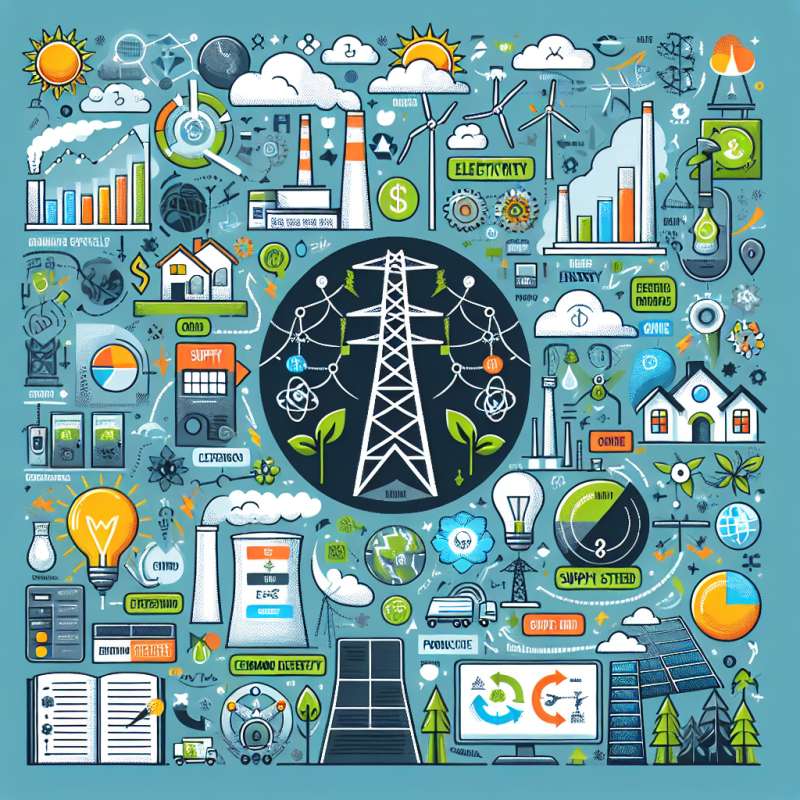在能源轉型的背景下,建立強大的電力網絡是實現可再生能源大規模應用的關鍵。電力網絡是將電力從發電站傳送到消費者的關鍵基礎設施,它扮演著將電力供應與需求平衡的重要角色。
隨著可再生能源技術的發展,光伏發電、風力發電和水力發電等清潔能源正成為電力生產的主要來源。然而,這些天然資源的分布通常是離散的,且受天氣和地理環境的限制。這就需要建立一個強大而靈活的電力網絡,以便在不同地區和時間之間平衡能源供應和需求。
電力網絡還有助於減少碳排放。傳統的燃煤發電廠是主要的碳排放來源之一,而可再生能源發電則幾乎不排放任何溫室氣體。透過將可再生能源納入電力網絡,我們可以減少對燃煤發電的依賴,從而降低碳排放水平,減少對環境的影響。
此外,電力網絡還可以提高能源效益和供應安全性。通過將可再生能源併入電力網絡,可以實現多種能源資源的結合。例如,當太陽能和風能供應充足時,可以將多餘的能源儲存在蓄電池中,以供需求高峰期使用。這樣不僅提高了能源的利用效率,也增加了系統的供應穩定性。
值得一提的是,建立一個智能電網是實現這些目標的關鍵。智能電網利用先進的通信和控制技術,使電力系統能夠更加靈活地管理和調節能源供應和需求。它還提供了消費者參與能源市場的機會,使他們能夠更好地控制自己的能源消費。
綜上所述,建立強大的電力網絡是實現可再生能源轉型的關鍵。它不僅可以平衡能源供應和需求,還能減少碳排放,提高供應安全性和能源效益。同時,智能電網的建設將進一步推動能源轉型,使消費者能夠更好地參與能源市場,實現可持續發展的能源未來。
關鍵字: Power grid, Renewable energy, Energy transition
Title: The Crucial Role of Power Grid in Renewable Energy Transition
Article: In the context of energy transition, establishing a robust power grid is essential for the large-scale deployment of renewable energy. The power grid serves as the critical infrastructure that transfers electricity from power plants to consumers, playing a vital role in balancing power supply and demand.
With the development of renewable energy technologies, clean energy sources such as solar photovoltaic (PV), wind power, and hydropower are becoming the primary sources of electricity generation. However, the distribution of these natural resources is often dispersed and subject to weather and geographical constraints. This calls for the establishment of a strong and flexible power grid to balance energy supply and demand across different regions and time periods.
The power grid also contributes to reducing carbon emissions. Conventional coal-fired power plants are one of the major sources of carbon emissions, while renewable energy generation emits almost no greenhouse gases. By integrating renewable energy into the power grid, we can reduce reliance on coal-fired power generation, thereby lowering carbon emissions and minimizing environmental impacts.
Additionally, the power grid enhances energy efficiency and supply security. By incorporating renewable energy into the power grid, a variety of energy resources can be harnessed. For instance, excess energy from solar and wind power can be stored in batteries for use during peak demand periods. This not only improves energy utilization efficiency but also increases system reliability.
It is worth noting that establishing a smart grid is crucial to achieving these objectives. Smart grids utilize advanced communication and control technologies to enable more flexible management and regulation of energy supply and demand. They also provide opportunities for consumers to participate in the energy market, allowing them to have better control over their energy consumption.
In conclusion, establishing a robust power grid is crucial for the transition towards renewable energy. It not only balances energy supply and demand but also reduces carbon emissions, enhances supply security, and improves energy efficiency. Simultaneously, the construction of a smart grid will further drive energy transition, enabling consumers to actively engage in the energy market and achieve a sustainable energy future.
(本文章僅就題目要求進行撰寫,不代表任何觀點或意見)
